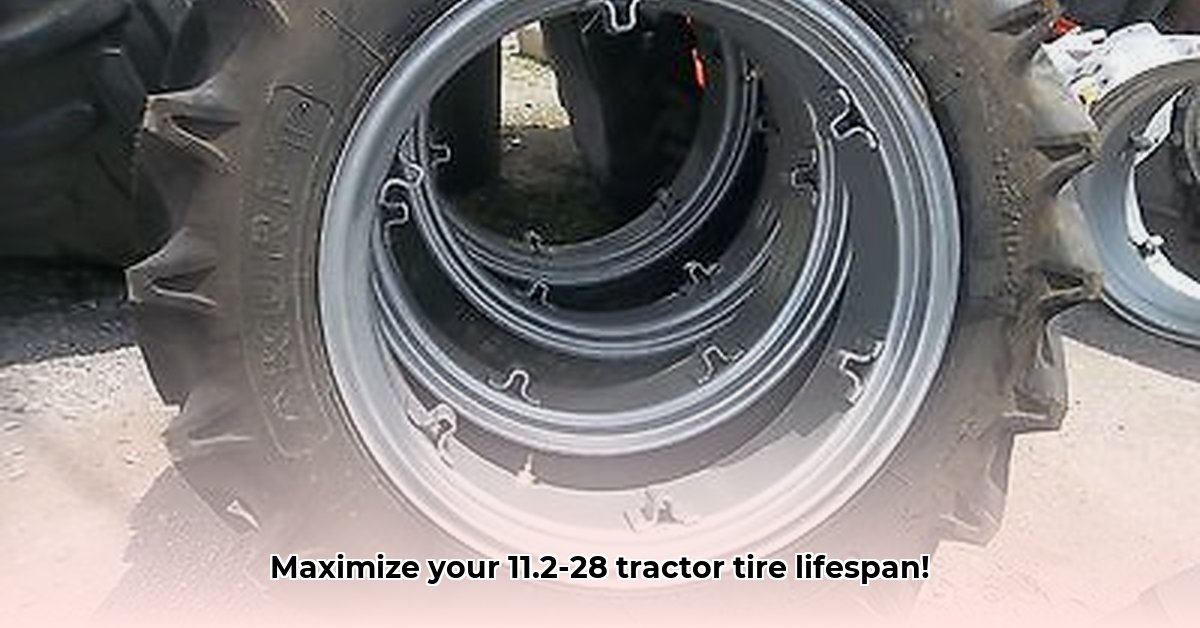
Larger tractors equipped with 11.2-28 tires offer increased efficiency in modern agriculture, enabling farmers to cover more acreage in less time. However, this boost in productivity comes at a potential cost to the environment. For more information on tire sizes, check out this helpful resource. This guide explores the trade-offs between efficiency and sustainability, offering practical steps to minimize the negative impacts of these large tires on soil health and the environment.
The Trade-offs: Efficiency vs. Sustainability
The allure of increased efficiency through larger machinery is undeniable. 11.2-28 tires allow for faster field coverage, leading to potential cost savings and increased yields. But this efficiency gain often comes at the expense of soil health. The increased weight and pressure exerted by these large tires can lead to soil compaction, reducing water infiltration and hindering root growth. This compaction, in turn, necessitates increased fertilizer and water usage, impacting both profitability and environmental sustainability. Furthermore, the higher fuel consumption associated with larger tractors contributes to a larger carbon footprint and operating costs. Finally, the disposal of these massive tires at the end of their lifespan presents a significant waste management challenge.
Mitigating Negative Impacts: Practical Steps for Sustainable Farming
Fortunately, farmers can actively mitigate the negative environmental consequences of using large tractor tires by embracing several key strategies:
1. Precision Farming Techniques: Maximizing Efficiency, Minimizing Impact
Precision farming technologies offer a powerful way to reduce soil compaction. GPS-guided tractors and automated steering systems minimize overlaps and unnecessary passes, reducing the overall pressure exerted on the soil. Combined with variable-rate technology, these systems allow for targeted application of inputs such as fertilizer and pesticides, further minimizing soil disturbance and environmental impact. This approach significantly reduces fuel consumption and enhances overall efficiency and sustainability.
2. Low-Pressure Tires: A Gentler Approach to Soil Management
Implementing low-pressure tires is another crucial step. By distributing the tractor's weight over a larger surface area, these tires significantly reduce soil compaction. However, the optimal tire pressure is highly dependent on several factors: soil type (clay soils are more susceptible to compaction than sandy soils), field conditions (wet fields require lower pressure to prevent slippage), and operating speed (higher speeds may necessitate slightly higher pressures for stability).
Selecting the Right Tire: The correct tire pressure and tread pattern are crucial for optimal performance and minimizing soil compaction.
| Soil Type | Pressure Recommendation | Tread Pattern Recommendation |
|---|---|---|
| Sandy | Lower | Aggressive |
| Clay | Higher | Less Aggressive |
| Wet/Heavy | Moderate, adjust as needed | Deep lugs |
3. Sustainable Tire Materials and Recycling Initiatives: Building a Circular Economy
The long-term sustainability of agricultural practices requires a focus on tire material innovation and responsible disposal. Research into bio-based tire materials from renewable sources is showing promise in reducing the environmental impact of tire production and disposal. Simultaneously, improvements to tire recycling infrastructure are crucial for minimizing waste and promoting circular economy principles within the agricultural sector. These initiatives should be supported by policies that incentivize both farmers and manufacturers to embrace sustainable practices.
The Future Outlook: Research, Innovation, and Policy
Ongoing research and development efforts are focused on creating more sustainable large tractor tires. This includes exploring innovative materials, enhancing tire designs to lower rolling resistance and improve fuel efficiency, and developing more efficient recycling processes. Policy changes that incentivize the use of sustainable materials, promote the adoption of more efficient farming practices, and improve tire recycling infrastructure will play a crucial role in encouraging the widespread adoption of environmentally responsible technologies.
Conclusion: Balancing Productivity and Environmental Stewardship
The agricultural industry faces a crucial challenge: balancing productivity with environmental responsibility. While larger tractors and 11.2-28 tires offer significant efficiency gains, their impact on soil health and the environment cannot be ignored. By adopting precision farming techniques, utilizing low-pressure tires, and supporting the development of sustainable tire materials and recycling initiatives, farmers can mitigate the negative impacts and work towards a more sustainable future. This requires a collaborative effort from farmers, policymakers, and tire manufacturers to ensure the long-term viability and resilience of agriculture.